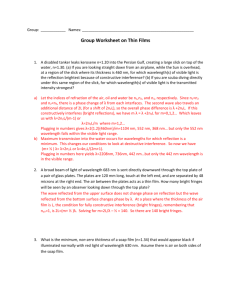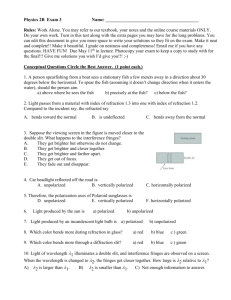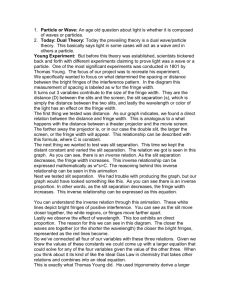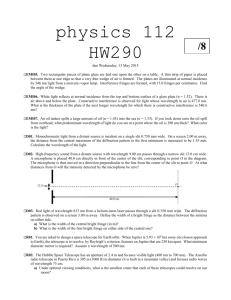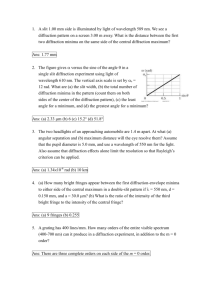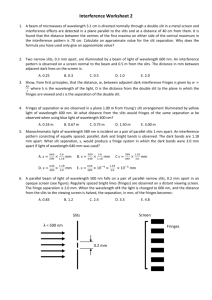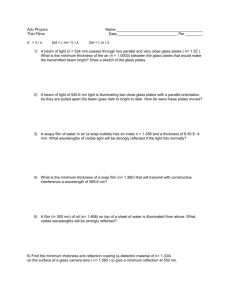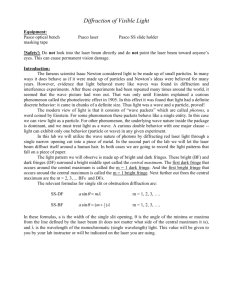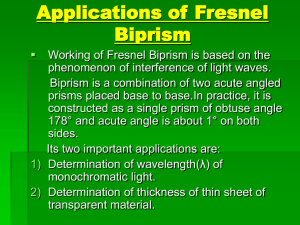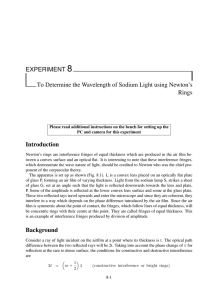wavelength lens
advertisement
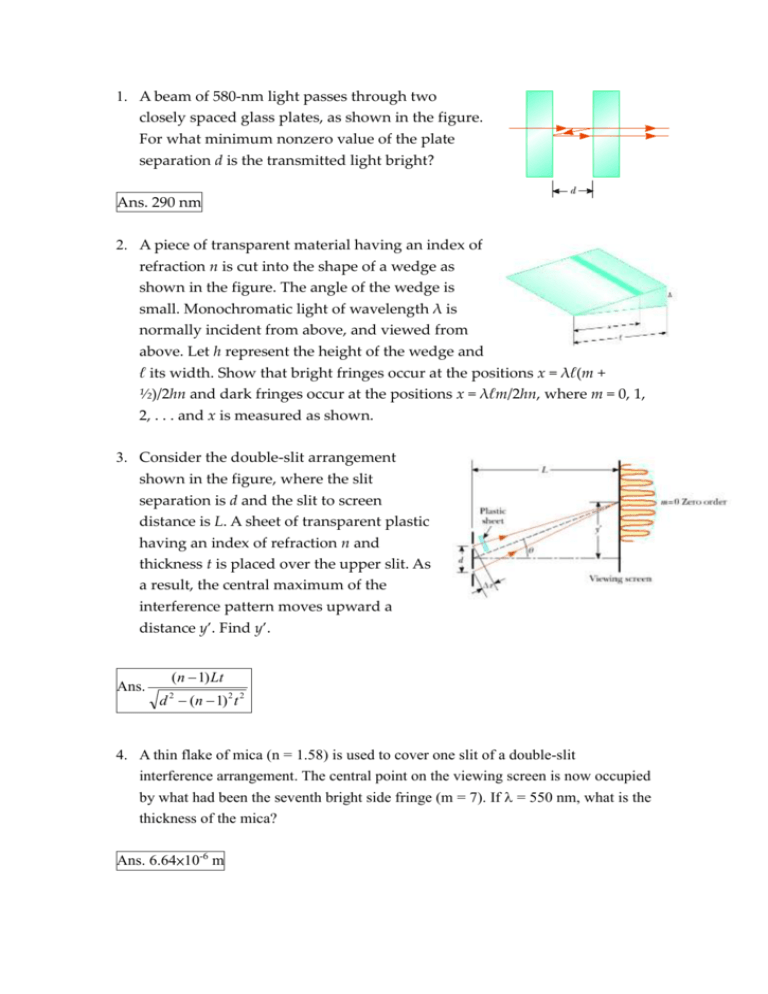
1. A beam of 580-nm light passes through two closely spaced glass plates, as shown in the figure. For what minimum nonzero value of the plate separation d is the transmitted light bright? Ans. 290 nm 2. A piece of transparent material having an index of refraction n is cut into the shape of a wedge as shown in the figure. The angle of the wedge is small. Monochromatic light of wavelength λ is normally incident from above, and viewed from above. Let h represent the height of the wedge and ℓ its width. Show that bright fringes occur at the positions x = λℓ(m + ½)/2hn and dark fringes occur at the positions x = λℓm/2hn, where m = 0, 1, 2, . . . and x is measured as shown. 3. Consider the double-slit arrangement shown in the figure, where the slit separation is d and the slit to screen distance is L. A sheet of transparent plastic having an index of refraction n and thickness t is placed over the upper slit. As a result, the central maximum of the interference pattern moves upward a distance y’. Find y’. Ans. (n 1) Lt d (n 1) 2 t 2 2 4. A thin flake of mica (n = 1.58) is used to cover one slit of a double-slit interference arrangement. The central point on the viewing screen is now occupied by what had been the seventh bright side fringe (m = 7). If = 550 nm, what is the thickness of the mica? Ans. 6.64×10-6 m 5. In the figure, a broad beam of light of wavelength 630 nm is sent directly downward through the top plate of a pair of glass plates touching at the left end. The air between the plates acts as a thin film, and an interference pattern can be seen from above the plates. Initially, a dark fringe lies at the left end, a bright fringe lies at the right end, and nine dark fringes lie between those two end fringes. The plates are then very gradually squeezed together at a constant rate to decrease the angle between them. As a result, the fringe at the right side changes between being bright to being dark every 15.0 s (a) At what rate is the spacing between the plates at the right end being changed? (b) By how much has the spacing there changed when both left and right ends have a dark fringe and there are five dark fringes between them? Ans. (a) 10.3 nm/s (b) 1.10 m 6. Figure (a) shows a lens with radius of curvature R lying on a flat glass plate and illuminated from above by light with wavelength . Figure (b) (a photograph taken from above the lens) shows that circular interference fringes (called Newton’s rings) appear, associated with the variable thickness d of the air film between the lens and the plate. Find the radii r of the interference maxima assuming r/R << 1. Ans. 1 (m ) R , m = 0, 1, 2, … 2 7. A thin film with index of refraction n = 1.44 is placed in one arm of a Michelson interferometer, perpendicular to the optical path. If this causes a shift of 7.0 bright fringes of the pattern produced by light of wavelength 589 nm, what is the film thickness? Ans. 4.7 m 8. In the figure, an airtight chamber of length d = 5.0 cm is placed in one of the arms of a Michelson interferometer. (The glass window on each end of the chamber has negligible thickness.) Light of wavelength = 500 nm is used. Evacuating the air from the chamber causes a shift of 60 bright fringes. From these data and to six significant figures, find the index of refraction of air at atmospheric pressure. Ans. 1.00030

